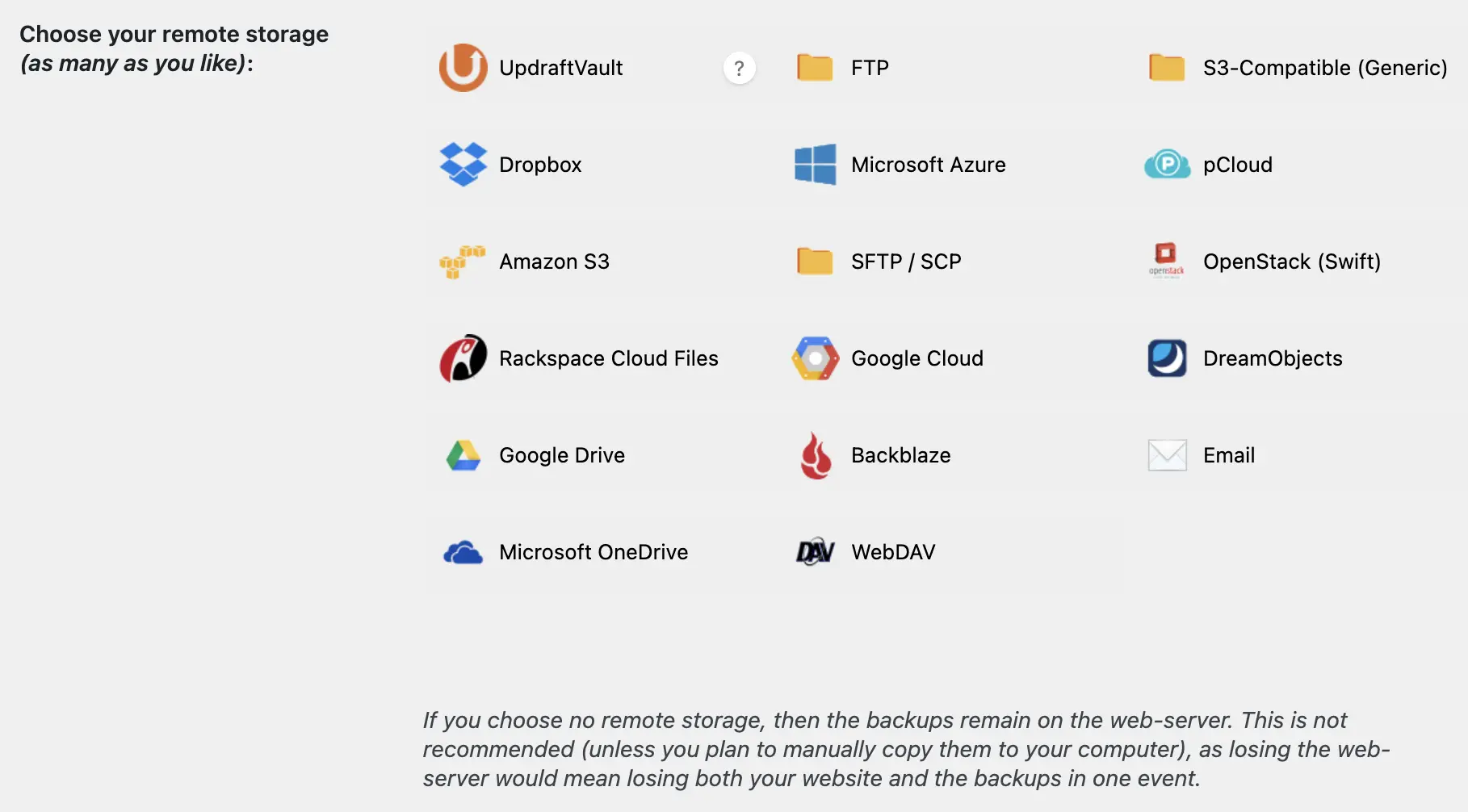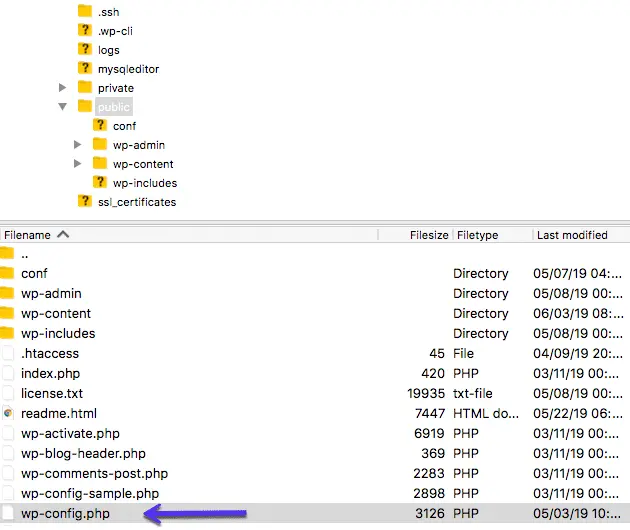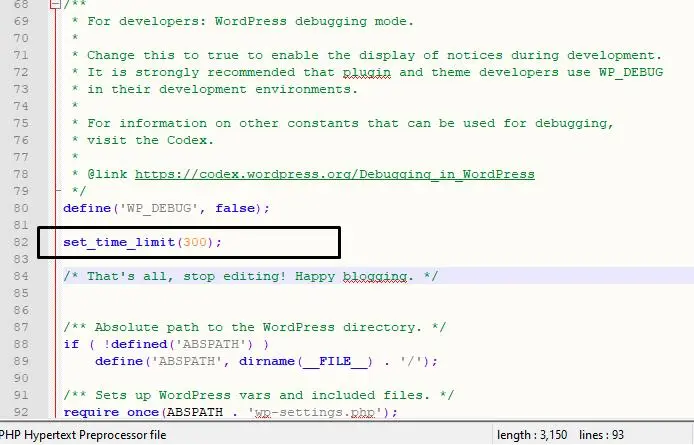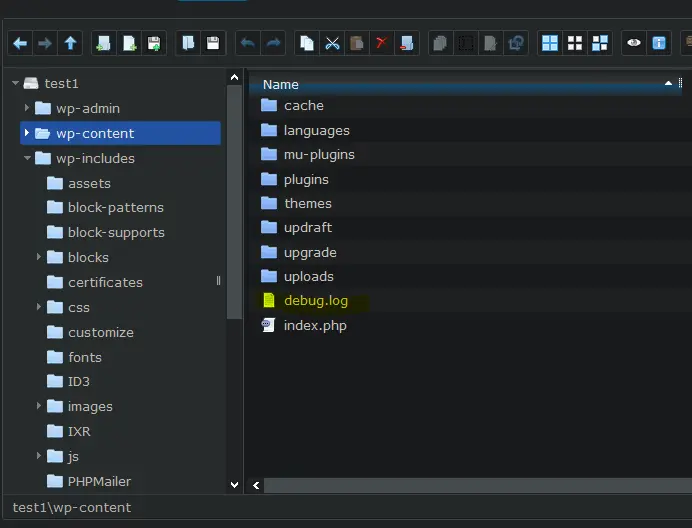Have you experienced an error while trying to create a backup using UpdraftPlus?
UpdraftPlus is the leading and most popular WordPress backup plugin globally, with over 3 million active installations. Users worldwide trust this plugin to securely back up their WordPress sites, including files and databases, for potential restoration in case of emergencies.
However, like any software or plugin, there are instances where you might run into issues while performing tasks – such as creating a backup.
In this article, we’ll explain the most common reasons behind failed UpdraftPlus backups and provide clear solutions on how to fix them.
Table of contents
- 1. Update plugin / Plugin conflict
- 2. Not connected to remote storage location / Remote storage full
- 3. Backup files too big
- 4. Host/server issues
- 5. Broken scheduler
- Bonus: Backup-specific error messages
1. Update plugin / Plugin conflict
One of the most common culprits for failed backups is an outdated UpdraftPlus plugin.
Even though older versions might still function, not keeping your UpdraftPlus plugin updated can lead to various problems, including backup errors.

Another potential issue is when a recently installed plugin conflicts with the UpdraftPlus plugin.
This typically happens because the new plugin loads its own versions of JavaScript libraries or cloud storage APIs on the UpdraftPlus page. These can prevent UpdraftPlus from initiating a backup or uploading backup files to remote storage.
Solution
Make sure you have the latest version of UpdraftPlus installed. Regular updates not only resolve bugs but also enhance compatibility with other plugins and WordPress versions.
If you experience backup failures after installing a new plugin, deactivate it temporarily. This step can help identify and resolve any compatibility issues that may arise.
2. Not connected to remote storage location / Remote storage full
Failure to connect to the remote storage location can also result in UpdraftPlus backup failures. If you’re encountering issues while trying to back up to remote storage, it could be due to various reasons.
One potential cause could be recent updates to your remote storage settings, such as changes in passwords or folder structures.
Another possibility is running out of space on the storage platform. Remote storage locations have finite space, and if there isn’t enough room for UpdraftPlus to save files, your backup might fail to complete.
Solution
To troubleshoot this, verify and update your remote storage settings.
For cloud storage services using OAuth verification (such as Dropbox, OneDrive and Google Drive), you might need to re-authenticate with your storage account.
Reconnect to your remote storage location by going through the full ‘add remote storage’ process again at UpdraftPlus > Settings. This allows you to re-authenticate with your chosen remote storage account.

Additionally, check your remote storage space availability. In case of insufficient space, consider deleting unnecessary files or purchasing additional storage if required.
After making these adjustments, remember to save your changes and attempt another backup.
3. Backup files too big
A primary technical reason for backup failures is that you’re trying to back up a file that’s too large to upload or too large to process on the server.
In cases where files are too large to upload, this can be caused by some plugins creating databases or files that are several hundreds of MB large. Such oversized files can cause UpdraftPlus to time out and not complete the backup.
Solution
Aim to reduce the backup archive split size to 100MB or lower if possible.
To reduce the archive split size:
- Go to the UpdraftPlus Settings and click on the Settings tab.
- Navigate to the ‘Expert settings’ section and select ‘Show expert settings’.
- Set the ‘Split archives every’ option to 100MB.
- Press the Save Changes button at the bottom of the page and perform a test backup.

However, suppose you have a large individual file on your site that can’t be split (like a large video file). In this scenario, increasing the PHP time limit (and possibly the memory limit) is recommended.
To increase the PHP time limit:
- Edit the wp-config.php file located in your WordPress site’s root folder using an FTP client or file manager.

- Open this file in a text editor and paste the below code just before the line says, ‘That’s all, stop editing! Happy blogging.’
set_time_limit(300);

- Save the changes and upload the file back to your server.
This new code will tell your server to increase the PHP time limit to 300 seconds.
Refresh your site and attempt another backup. You can further increase the time limit if necessary.
Additionally, you can also try increasing the memory limit:
- Similarly, edit the wp-config.php file.
- Add the following line before the line: ‘That’s all, stop editing! Happy blogging.’
define(‘WP_MEMORY_LIMIT’, ‘256M’);
- Save the changes.
This will increase your WordPress site’s PHP memory limit to 256MB. Test your WordPress site again after applying the changes.
Expert tip: If a file is excessively large and keeps causing problems, consider excluding this specific file from the backup process. We also highly recommend using a WordPress optimization plugin like WP-Optimize to help reduce the size of any large databases or files you may be trying to back up. WP-Optimize is a free and highly rated plugin that offers effective database cleanup functionalities to streamline your backup process.
4. Host/server issues
If the issue of large files was the cause of the backups failing, it might suggest underlying problems with your backup server.
One major problem could be insufficient server resources allocated by your web hosting provider.
Solution
Consider upgrading to a higher-tier hosting platform that dedicates more resources to your website. This upgrade could facilitate quicker and more seamless backups.
If the problem persists, there might be other underlying host or server-related issues at play.
We recommend contacting the UpdraftPlus support team to examine PHP error logs. These logs can provide insights into the exact issues causing backup failures.
To find the necessary file, you will need FTP access to the server for a PHP log (also applied to remote storage). The WP Debug log, containing error information, can typically be found at the following location.

Expert tip: The WP-File Manager plugin can assist you in locating the files containing the additional information you need.
5. Broken scheduler
If scheduled backups fail to initiate or freeze midway, it may indicate an issue with the scheduler within your WordPress setup.
Scheduler problems can affect any scheduled backup plugin as well as various other tasks scheduled by WordPress and other plugins.
Initiating a backup directly through the ‘Backup Now’ function bypasses the scheduler initially. However, it utilises the scheduler to schedule a resumption of the job if needed – particularly if it exceeds the time limit set by the web server.
Solution
Read our comprehensive list of what broken scheduler issues can entail and how to fix them. This article provides detailed guidance on resolving issues such as:
- Maintenance mode
- No visitors
- Disabled schedulers
- Loopback connections are not working
- External cron jobs
- Password protected websites
Bonus: Backup-specific error messages
As a bonus point, in this section, we’ve addressed five common failed backup error messages and provided quick ways to solve them:
the ‘backup now’ button is disabled as your backup directory is not writable (go to the ‘settings’ tab and find the relevant option)
Navigate to UpdraftPlus Settings > Show expert settings to set up the ‘Backup directory’.
It will tell you if it’s not writeable, and you may need to check your file permissions (should be 755).
However, the most common reason you would see the disabled backup now button is a lack of space on your server.
remote fetch failed no local copy present
This or the “updraftplus remote fetch failed” error indicates that UpdraftPlus is unable to retrieve the backup. Sometimes, this can be a firewall or security plugin blocking the connection. But the most common reason is the file has been removed.
To resolve this, download the backup from your remote storage and upload it to the backup/restore tab.
1 backup task(s) have been failed. please switch to log page to send us the debug information
To address this issue, switch on debug mode in Settings > Show expert settings. While this may provide insight to developers, it’s more beneficial to send PHP error logs to the UpdraftPlus team for analysis.
updraftplus restore error: html was detected in the response. you may have a security module on your webserver blocking the restoration operation
This suggests that a security module, often mod_security, is blocking the restoration operation. Contact your hosts to disable it.
updraft_send_command: error: error ()
This error is typically caused by plugin, firewall, or security plugin conflicts. Deactivate any suspected plugins to resolve the issue.
Conclusion
And that’s all!
We hope this article has helped you understand the specific failed backup errors and provided effective solutions to resolve them.
If you’ve tried all the above fixes and are still encountering issues, don’t hesitate to reach out to us via our customer support form. Our team is dedicated to assisting you and will do our best to help you resolve the problem promptly and effectively.
FAQs
How do I manually restore the UpdraftPlus backup?
To manually restore the UpdraftPlus backup, go to Settings > UpdraftPlus Backups > and click the ‘Restore’ button. There, you will see a record of your backup. Choose your backup and select components to restore.
Warning: This process overwrites existing data. So proceed with caution.
Why is my backup failing?
Typical causes of failed UpdraftPlus backups may include:
- An outdated plugin.
- Plugin conflicts.
- Oversized files.
- Limitations imposed by the host/server.
- A broken scheduler.
Where does UpdraftPlus store backups?
UpdraftPlus stores backups by default in your website’s wp-content/updraft folder. You can also choose remote storage options like Google Drive, Dropbox, or Amazon S3.
How do I delete old backups from UpdraftPlus?
To delete old backups from UpdraftPlus directly:
- Go to UpdraftPlus Settings.
- Navigate to the ‘Existing Backups’ tab.
- Select the backups you want to delete.
- Click “Delete Selected Backups”.
Note: Deleting backups removes them permanently. Be sure you don’t need them before deleting them. Also, always keep at least one recent backup for safety.